February 02 is when many celebrate the February Cross-Quarter known as Imbolc or Candlemass, the festival of lights in the Catholic Tradition, also known as Ground Hog Day in the United States. More details about Imbolc https://cayelincastell.com/imbolc-candlemass-and-the-february-cross-quarter/
Shifting the Tradition to a Calendar Date
Currently the actual cross-quarter day is when the Sun reaches 15 degrees Aquarius that usually happens precisely on Feb 3 or Feb 4 marking the exact half way point between the December Solstice when the Sun crosses 0 Capricorn and the March Equinox when the Sun crosses O Aries.
Many cultures timed their Cross-Quarter celebrations with the closest New or Full Moon as the Sun was reaching the cross-quarter point marrying the Solar cycle with the Lunar cycle. This began shifting when holidays (holy days) were fixated on the calendar. Candlemass was the Catholic way of overlaying a christian holiday over the pagan cross-quarter celebration between the December Solstice and the March Equinox. In 1582 to the Gregorian calendar was instituted partly so the church could control when the holidays were being celebrated.
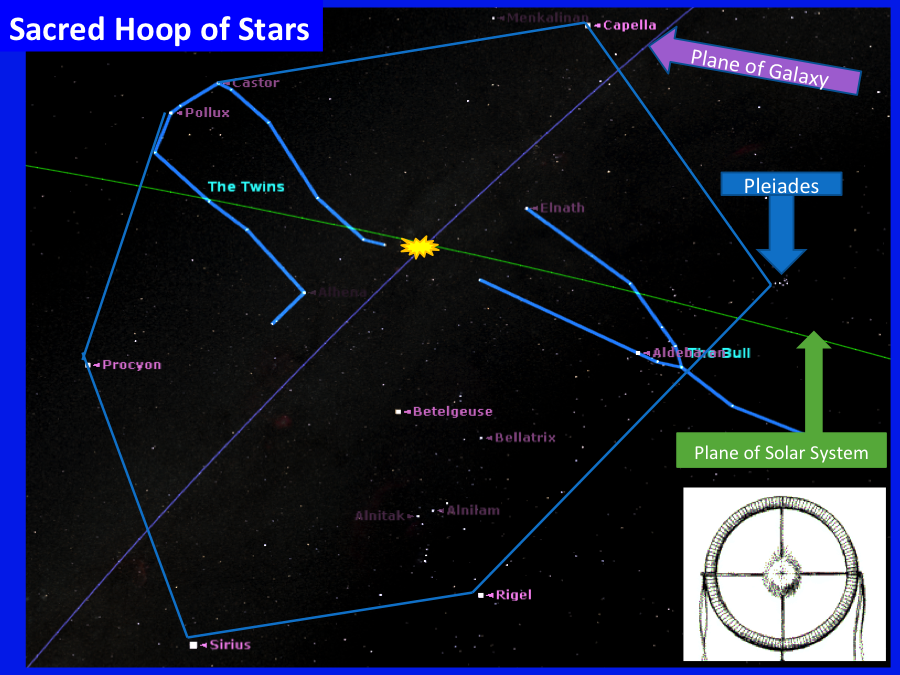
Fred Schaff writing for Sky and Telescope tells us that the Perseus constellation is one of the brightest constellations in the sky and is worthy of our attention especially when we consider the mythic stories connected to this part of the sky.
Perseus is the hero and the champion who saved Andromeda from Cetus the monstrous whale. Queen Cassiopeia wife of Cepheus upset Poseidon when she bragged that she was more beautiful than his sea nymphs. Poseidon sent Cetus to destroy there home in Ethiopia.
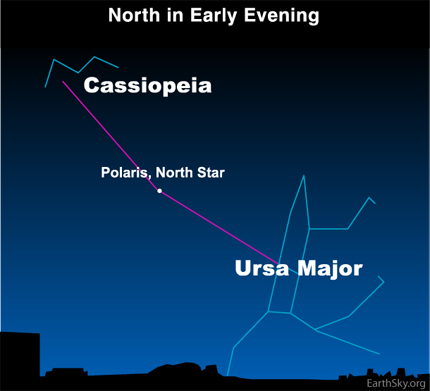
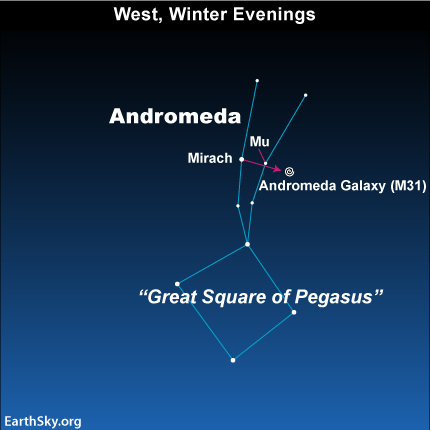
Cassiopeia and her husband consulted an Oracle and were told they must sacrifice their daughter to stop the attack. In this version of the story they chained Andromeda to a rock for the monster to claim. Perseus came and rescued Andromeda and later they got married.
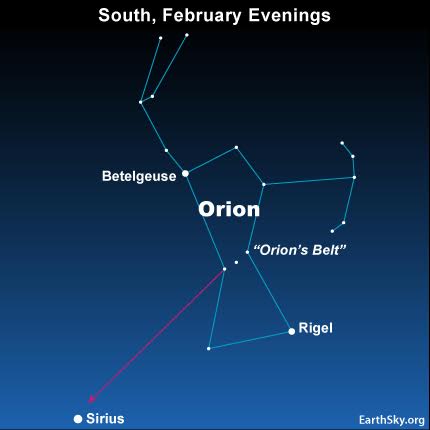 Another version of the story describes Andromeda being the only one in her town that was willing to face the monster to save her people (more of an Aries Feminine Telling). While Andromeda is doing battle with the sea monster Perseus shows up and they battle the monster together – eventually defeating it in a collaborative team effort.
Another version of the story describes Andromeda being the only one in her town that was willing to face the monster to save her people (more of an Aries Feminine Telling). While Andromeda is doing battle with the sea monster Perseus shows up and they battle the monster together – eventually defeating it in a collaborative team effort.
Cygnus is visible early evening sky with its northern cross configuration standing upright on the horizon just south of Northwest.
Vega was our pole star 13,000 years ago and is lovely to see near Cygnus.
Polaris is now our Pole Star meaning it is the only star in the Sky that does not move from the Earth’s perspective.
The four Royal stars (also considered Behenian Stars or the magical stars of the ancient alchemist – more at this link https://cayelincastell.com/behenian-stars/) are all visible in the night sky. This isn’t always the case when the Sun is passing by one of them during the years. In order of appearance: Fomalhaut (already in evening sky after sunset), Aldebaran (already in evening sky after sunset), Regulus (rises just before 9 pm), Antares (rises just before 5 am).
.
The Unicorn a.k.a Monoceros
This constellation in the Great Above…reminds us of the Unicorns in the Great Below and this is the time of year to see this constellation in the sky connecting us to these magical creatures.
Unicorn’s are magical mythical creatures and their horns are said to be healing. Mythic stories from India and in the writings of Ctesias an ancient Greek Physician – wrote that the rulers of India used the Unicorn’s horn for anti-toxin purposes as a way to avoid being assassinated by poison.
Unicorns in current day are seen as a horse with a single horn. Ctesias described them this way:
“The unicorn was native to India, the size of a donkey, with a burgundy head and white body; it had blue eyes, a single horn that was bright red at the top, black in the middle, and white at the bottom; the horn was also eighteen inches long.”
 The World is as we See It and Dream It into reality – so connecting with the Unicorn in the sky we can imagine an even more magical awareness of Unicorns in this world as powerful allies and guides.
The World is as we See It and Dream It into reality – so connecting with the Unicorn in the sky we can imagine an even more magical awareness of Unicorns in this world as powerful allies and guides.
The Sacred Hoop of Starsis high in the sky after Sunset and is marked by the stars Castor and Pollux, Procyon, Sirius, Rigel, the Pleiades and Capella. At the center of this Hoop is the Galactic Edge where the plane of the galaxy and the plane of the Solar system intersect forming the Galactic Cross where the June Solstice Sun currently rises. The Sacred Hoop is visible in the Northern hemisphere from November to April with the middle months being the best time to view it. http://shamanicastrology.com/astro-news/the-2002-planetary-alignment-in-the-sacred-hoop
Betelguese,Rigel and Orion’s Belt are also visible inside the Hoop. See the January 2010 archives for details.
Our brightest fixed star is Sirius (magnitude -1.46) lighting up the winter skies and is also marking the outer edge of the Sacred Hoop.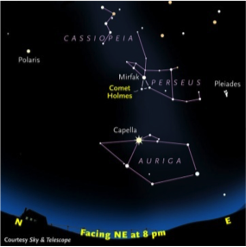
Capella is located in the constellation of Auriga and is one of the main stars that mark the outer rim of the Sacred Hoop. Auriga, the charioteer, is an imagery associated with this constellation thought to have originated with the Babylonians. Capella (magnitude of 0.08) is the 6th brightest star in our night sky.
Canis Major, the Great Dog, is visible in the northern hemisphere from December through March. This star group can be seen in the southern hemisphere between November and April. This constellation represents the larger of Orion’s two hunting dogs who accompany him as he hunts Lepus, the rabbit. Canis Major is the home of Sirius, the Dog Star, the brightest star in our night sky. At -1.46 magnitude Sirius dominates the winter skies not only marking the outer edge of the Sacred Hoop but is also one of the three stars along with Procyon and Beleguese forming the equilateral triangle known as Heaven’s Gate or the location in the sky many cultures have seen as the entry point into this dimension of experience. Sirius can be easily located by drawing a straight line through the three belt stars in the constellation Orion.
Lepus, the Rabbit, as it was known to the Greeks, is being hunted by Orion’s dogs Canis Major and Canis Minor. In February Lepus is under Orion and to the west or right of dogs. It is located just below Orion and west of Canis Major and Minor. See image above.
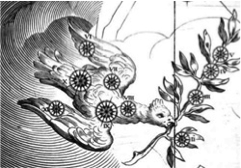 February is the best month to see the constellation Columba, the dove in Northern latitudes. The dove was sent out ahead of the ship Argo by the Argonauts to assist navigation through the narrow passage at the mouth of the Black Sea. The dove was also sent by Noah from his ark to find land and returned carrying an olive branch in its beak.
February is the best month to see the constellation Columba, the dove in Northern latitudes. The dove was sent out ahead of the ship Argo by the Argonauts to assist navigation through the narrow passage at the mouth of the Black Sea. The dove was also sent by Noah from his ark to find land and returned carrying an olive branch in its beak.
Winter Stars are Brighter
In the Northern Hemisphere winter (aka Southern Hemisphere summer), the stars seem brighter in the sky because during December, January and February evenings, we are facing into the spiral arm of our Milky Way galaxy.
The Zodiacal Light
This month is also good for seeing the Zodiacal Light about one to two hours after sunset on clear moonless nights. The zodiacal light is a faint glow seen above the horizon that shows up in where the Sun set and reaches up into the night sky. In mid-northern latitudes, the zodiacal light is best observed in the western sky after the evening twilight disappears, or in the eastern sky in the autumn just before the morning twilight appears. It is so faint that it is completely masked by either moonlight or light pollution.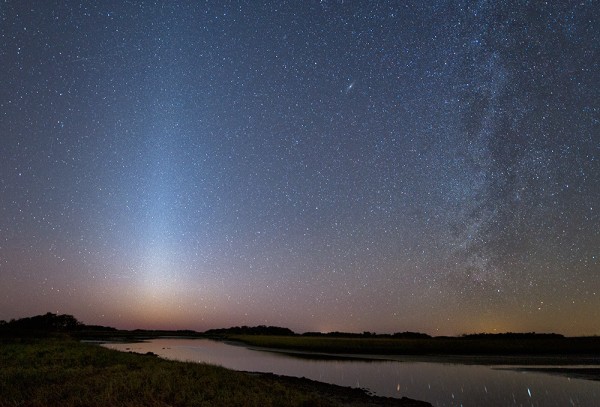

Trackbacks/Pingbacks